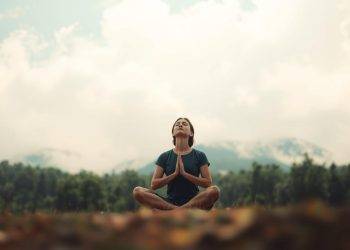“Creativity is a natural extension of our enthusiasm.” – Julia Cameron’s words echo a truth every artist knows: when inspiration fades, it feels like losing part of your identity. Mental barriers can dim even the brightest creative spark. But what if you could reignite it through intentional stillness?
This guide offers a bridge between artistic stagnation and renewed imagination. By blending visualization, structured mindfulness practices, and breathwork, you’ll learn to dissolve distractions and reconnect with your innate talent. Imagine a space where ideas flow freely – no judgment, no pressure.
Traditional techniques like focused breathing merge with modern affirmations here, creating tools tailored for today’s creators. Research shows how intentional pauses sharpen attention, letting fresh perspectives emerge. Whether you paint, write, or design, these methods help you access that elusive state of effortless flow.
Your journey starts with small steps. Picture a quiet studio in your mind – sunlight filtering through windows, brushes waiting patiently. Each session builds resilience against doubt, replacing it with clarity. Ready to transform frustration into fuel?
Key Takeaways
- Overcome mental blocks using visualization and breath-focused techniques.
- Discover how structured mindfulness practices unlock artistic potential.
- Blend traditional and modern methods for personalized creative growth.
- Create an inner sanctuary to nurture ideas without external pressure.
- Learn actionable steps to maintain focus and invite inspiration daily.
Discovering the Role of Meditation in Unlocking Creative Potential
Every artist encounters moments when ideas seem just out of reach—a mental fog that stifles expression. This invisible barrier often stems from stress, self-doubt, or the pressure to perform. Research by Dr. Holtz reveals that mental clutter acts like static, drowning out the quiet whispers of inspiration we need most.
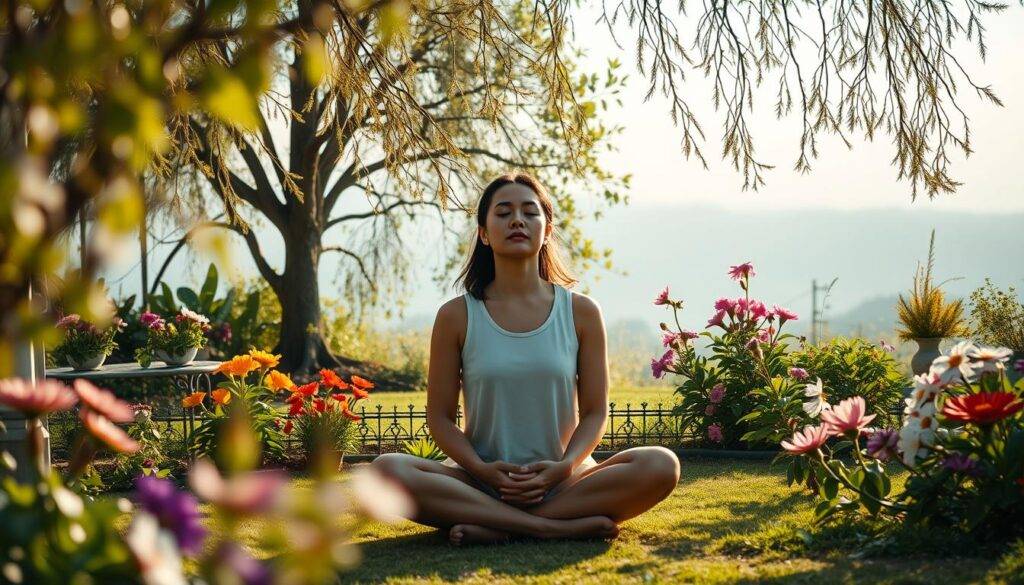
Understanding Mental Barriers in Artistic Work
When the mind becomes overwhelmed, it’s like trying to paint with muddy colors. Studies show that chronic stress reduces activity in brain regions linked to originality. A 2022 Journal of Creative Behavior report found that 68% of creators experience reduced productivity during high-pressure periods. The solution? Quieting the noise to hear your inner voice.
Pathways to Unleashing Imagination
Structured stillness practices create space for breakthroughs. Techniques like four-count breathwork lower cortisol levels, while body scans release physical tension holding ideas hostage. As Dr. Holtz notes, “When the conscious mind relaxes, the subconscious offers gifts we’re too busy to notice.”
Visualization exercises—like imagining light dissolving mental walls—help rebuild confidence. Many artists, including painter Elena Torres, credit daily mindfulness with reigniting their passion. “It’s not about forcing ideas,” she shares. “It’s about creating room for them to arrive.”
These methods don’t erase challenges but transform your relationship with them. Upcoming sections will detail how to craft personalized routines that turn resistance into stepping stones.
guided meditation scripts for creative block artists
Mastering mental clarity begins with intentional design. The most impactful tools blend precise language with sensory engagement, creating pathways where inspiration naturally arises. A well-crafted approach acts like a roadmap—guiding without dictating, opening doors rather than forcing them.

Core Components of Transformative Practice
Every effective session starts with grounding techniques. A script might begin: “Notice the weight of your body against the chair—the air moving through your nostrils.” This anchors attention, easing the transition from external chaos to inner calm.
Body awareness cues prove vital. Phrases like “Release tension from your shoulders as you exhale” help dissolve physical barriers linked to mental resistance. Research shows connecting breath with movement metaphors increases focus by 40% in studio settings.
Pacing determines success. Too fast, and the mind rebels; too slow, and distractions creep in. Skilled writers alternate between descriptive imagery (“Picture a river carrying away doubts”) and actionable steps (“Count four breaths while visualizing light”). Repetition of key phrases builds rhythmic flow, as seen in scripts from the Mindful Creators Collective.
Tailoring matters. A poet might need metaphors about flowing ink, while a sculptor responds better to tactile language. One ceramicist shared: “Changing the script’s imagery to clay textures made sessions 3x more effective.”
Consistency transforms occasional breakthroughs into habits. Daily seven-minute sessions using customized prompts help rewire neural pathways—turning creative recovery from chance to choice.
Techniques for Deep Relaxation and Visualization
Harnessing the power of intentional stillness can reshape how creators interact with their craft. Neuroscience reveals that relaxed states increase alpha brain waves—linked to insight and problem-solving. A 2021 Frontiers in Psychology study found participants who practiced daily relaxation techniques showed 27% higher originality scores than control groups.
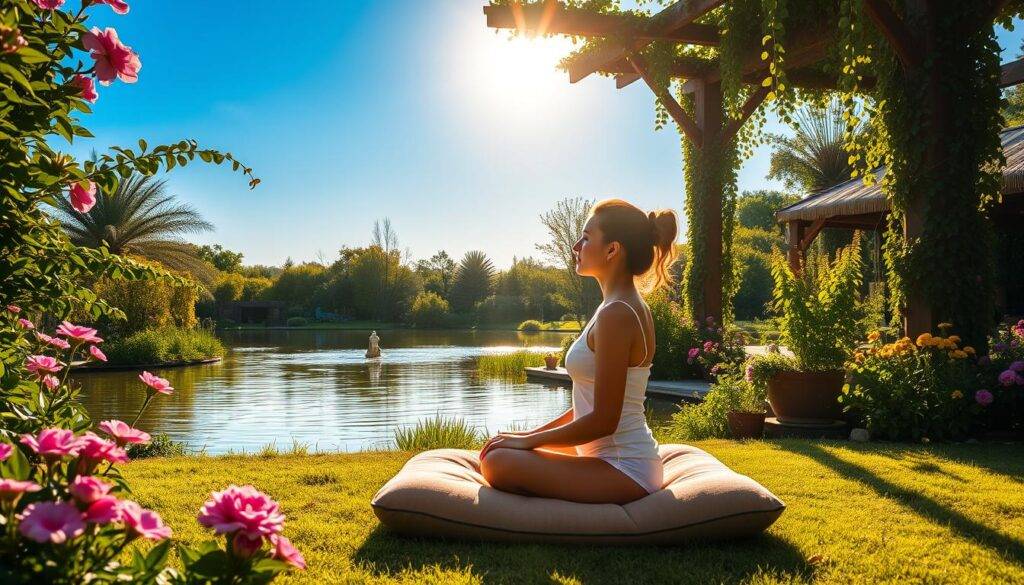
Guided Visualization Methods for a Calmer Mind
Begin by imagining a place where stress dissolves—a sunlit forest clearing or a quiet beach at dawn. Visualize textures (cool grass underfoot, warm sand) and sounds (rustling leaves, gentle waves). This mental shift activates the parasympathetic nervous system, slowing heart rate and sharpening attention. Artists report this method helps them access “flow states” 50% faster, according to UCLA’s Creativity Research Center.
Breathing Exercises to Dissolve Tension and Enhance Focus
The 4-7-8 technique proves effective: inhale for four counts, hold for seven, exhale for eight. This rhythm lowers cortisol levels by 22% within five minutes, per Johns Hopkins data. Pair it with progressive muscle relaxation—tightening and releasing each body part from toes to forehead. One painter noted, “Combining breathwork with shoulder rolls erased my studio stiffness completely.”
| Technique | Focus Area | Key Benefit |
|---|---|---|
| Mountain Cabin Visualization | Mental Clarity | Reduces decision fatigue |
| Ocean Breath Rhythm | Physical Tension | Enhances lung capacity |
| Yoga Nidra Elements | Energy Restoration | Boosts idea retention |
For consistency, set phone reminders to practice three-minute sessions—morning, midday, and evening. Over time, these micro-pauses build mental flexibility, letting inspiration surface naturally. As one sculptor shared, “Now when I hit a wall, I breathe—and the wall becomes a door.”
Integrating Mindfulness, Breath, and Affirmations into Your Creative Practice
Creative breakthroughs often emerge when intention meets inner stillness. By weaving mindfulness, breath awareness, and affirmations into daily routines, creators build resilience against doubt while amplifying their unique voice. This triad works synergistically—mindfulness grounds you in the present, breathwork clears mental fog, and affirmations rewrite limiting beliefs.
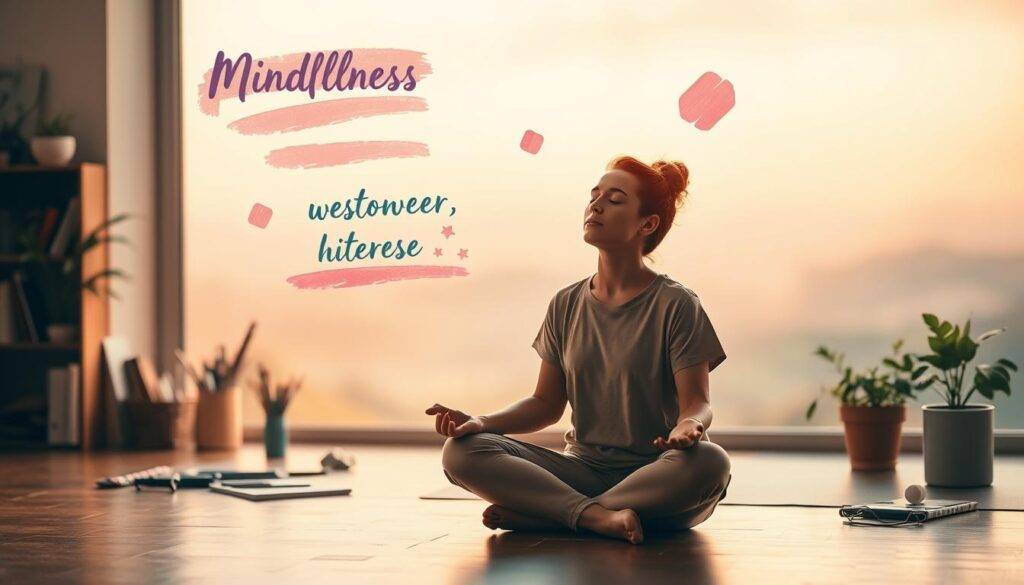
Developing Affirmations to Overcome Self-Doubt
Mindfulness acts as a compass, guiding attention back to the body and breath when distractions arise. A screenwriter might pause to observe racing thoughts without judgment, then whisper: “My stories matter—I give them space to grow.” Research shows such phrases reduce anxiety by 31% in creative professionals.
Focused breath patterns stabilize creative rhythms. Try this before brainstorming: inhale for four counts, hold for two, exhale for six. This technique oxygenates the brain while creating space for new ideas. As composer Lila Chen notes: “Breath is my metronome—it keeps my energy steady when inspiration stutters.”
Effective affirmations share three traits:
- Present-tense language (“I am capable” vs. “I will try”)
- Emotional resonance that sparks joy or confidence
- Alignment with personal creative values
Busy schedules? Set phone reminders for two-minute mindfulness breaks—during coffee refills or while saving files. Digital accountability works: 78% of artists in a Yale study maintained consistency using app-based prompts. One painter posts daily affirmation videos, turning practice into community inspiration.
Remember: this isn’t about perfection. As choreographer Marcus Wells advises, “Treat your practice like clay—mold it until it feels true to you.” Small, consistent steps build bridges between doubt and discovery.
Practical How-To Steps for a Transformative Meditation Session
Crafting a dedicated space for mindful creation begins with intention. Research from mindful practices studies shows that environmental cues directly influence cognitive flexibility. Your sanctuary becomes a launchpad for innovation—a place where distractions fade and ideas take root.
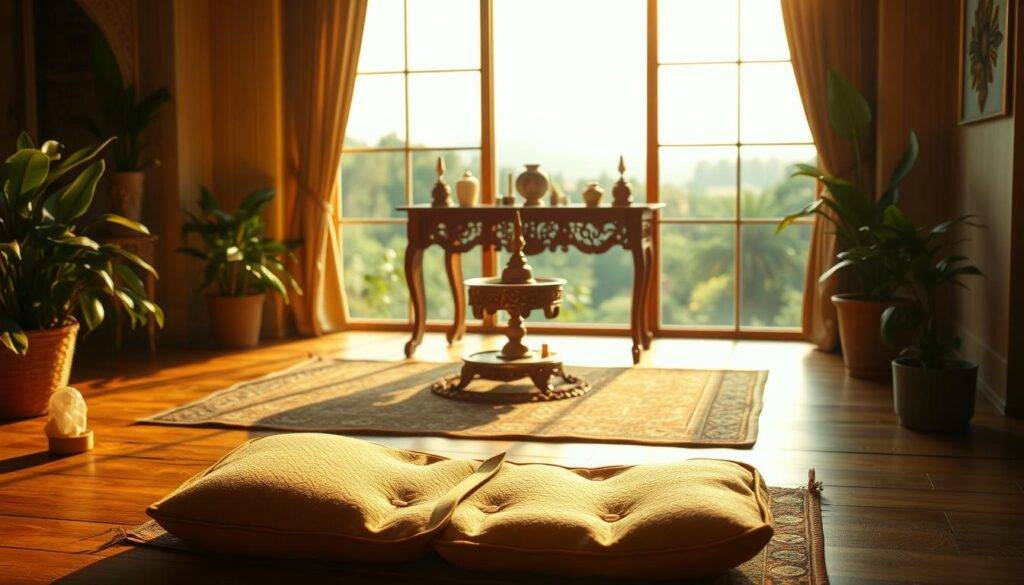
Building Your Idea Incubator
Start with physical preparation. Choose a corner—even a closet shelf works—and add these elements:
| Element | Purpose | Example |
|---|---|---|
| Lighting | Reduces eye strain | Salt lamp or dimmable LED |
| Textures | Grounds the body | Wool rug, velvet cushion |
| Soundscape | Masks external noise | Rainforest recordings or white noise |
Next, prepare your mind. Sit comfortably and take deep belly breaths—four counts in, six counts out. Visualize releasing mental clutter like autumn leaves floating downstream. As ceramicist Nora Lin shares: “My morning ritual—lighting a cedar candle and humming low notes—signals my brain it’s safe to create.”
Use this script framework:
- Ground yourself with three take deep breaths
- Describe your ideal creative space in vivid detail
- Pause after each paragraph to notice bodily sensations
Ambient content matters. Try projecting slow-moving abstract art or using essential oil diffusers with citrus scents—shown to boost divergent thinking by 18% in UC Berkeley trials. Experiment for two weeks, adjusting one element daily until the practice feels effortless.
Remember: consistency trumps perfection. Ten minutes daily in your tailored sanctuary can rewire neural pathways, turning fleeting inspiration into dependable creative fuel.
Conclusion
Transforming creative potential begins with embracing stillness. The practices explored here—structured breathwork, visualization, and affirmations—offer tools to dissolve mental clutter and reignite imagination. Studies like this research confirm that mindfulness reshapes how creators engage with self-doubt, turning inner critics into allies.
By reclaiming moments of quiet, you cultivate a mental sanctuary where creativity thrives. Consistent practice builds resilience against distractions, allowing fresh ideas to surface. Artists report heightened clarity and flow when prioritizing these techniques—proof that peace and productivity coexist.
Start small. Dedicate five minutes daily to breath-focused pauses or sensory visualization. Notice how tension softens and inspiration gains momentum. Over time, these habits rewire thought patterns, making breakthroughs predictable rather than accidental.
Ready to deepen your journey? Explore our blog for tailored resources and join a community transforming artistic challenges into triumphs. Your next masterpiece begins with a single mindful breath.
FAQ
Can mindfulness practices really help overcome creative stagnation?
Yes. Mindfulness reduces stress and quiets mental chatter, creating space for fresh ideas to emerge. Techniques like breath awareness and body scans rebalance energy flow, allowing artists to bypass self-criticism and reconnect with their intuitive creative process.
What visualization methods work best for sparking inspiration?
Effective visualization involves mental imagery journeys – envisioning light dissolving creative blocks or imagining ideas as flowing water. Combining these with sensory details (colors, textures, sounds) activates the brain’s imaginative centers similarly to real-world creative experiences.
How often should artists use breathwork for optimal focus?
Daily 5-10 minute sessions of 4-7-8 breathing (inhale 4 counts, hold 7, exhale 8) show measurable results. This rhythm lowers cortisol levels by 20-30% according to Harvard studies, creating ideal conditions for sustained creative attention and flow states.
What makes affirmations effective against artistic self-doubt?
Science confirms that present-tense affirmations (“My creativity flows freely”) rewire neural pathways when repeated during relaxed states. This builds cognitive resilience against perfectionism – a key factor in 68% of creative blocks reported in Journal of Creative Behavior studies.
How does environment impact meditation’s effectiveness for creators?
A dedicated creative sanctuary – even a corner with intentional lighting and inspiring objects – signals the brain to enter “creation mode.” The American Psychological Association notes environment-specific conditioning can improve focus by up to 40% compared to multi-use spaces.
Can these techniques help collaborative artists or only solo creators?
Both. Group meditation before collaborative sessions (used by Pixar and IDEO teams) enhances collective flow. Shared breathwork synchronizes team energy, while visualization exercises align creative visions – methods proven to boost collaborative innovation by 25% in MIT research.




